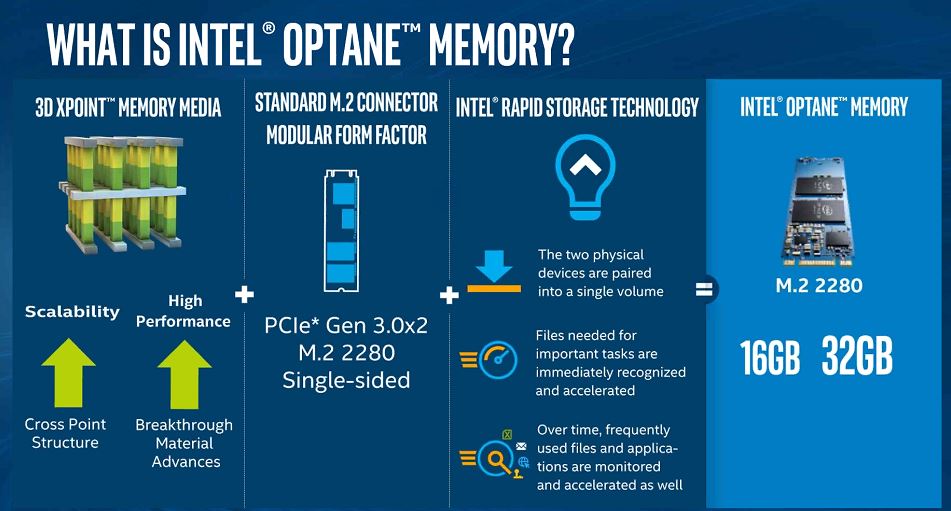Recently we covered the launch of the Intel DC P4800X Optane based SSD for the data center. Not far behind we have the Intel Optane memory for client workloads based on 3D XPoint. The first generation Intel Optane Memory product for client workloads is focused on adding extremely fast caching to client workloads.
Intel Optane Memory Overview
We wanted to get to the high-level slide from Intel first. The Intel Optane Memory first generation cards will be PCIe 3.0 x2 devices that are in M.2 2280 form factors (22mm x 80mm).
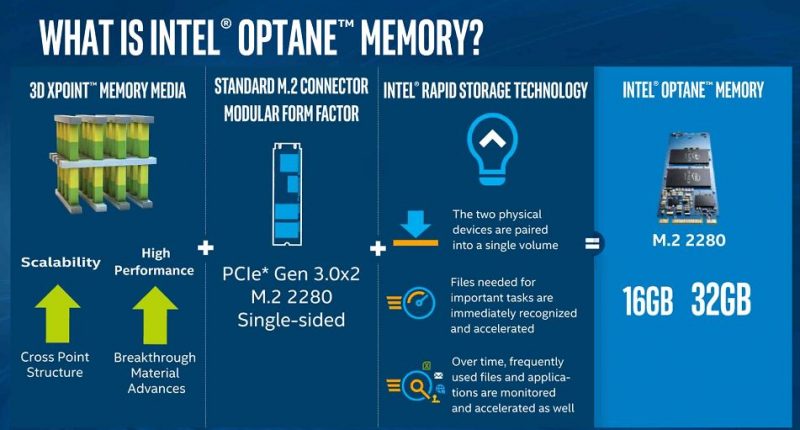
The x2 specification is disappointing as it will naturally limit the throughput of devices. Intel is selling these devices as high-end caching devices meant for higher-end systems. We do not expect the Intel Optane Memory cards to be popular in the low-end Core i5 market for the time being.
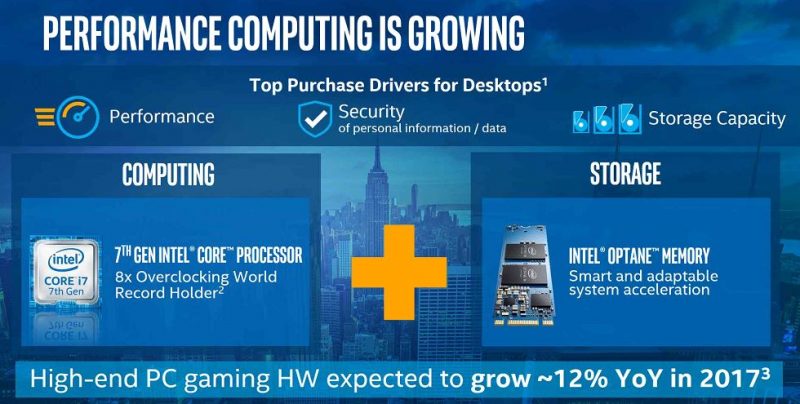
The summary is clear, 16GB or 32GB of fast storage on a PCIe 3.0 x2 bus. We did ask and the M.2 devices are single-sided which should help for cooling.
Intel Optane Memory Performance Data Points
Perhaps the most interesting part of the press briefing on Intel Optane was the detail around client workloads. Intel showed data from their profiling tools. You can see the difference between the average consumer versus the average IT user, with the IT user having a much higher workload.
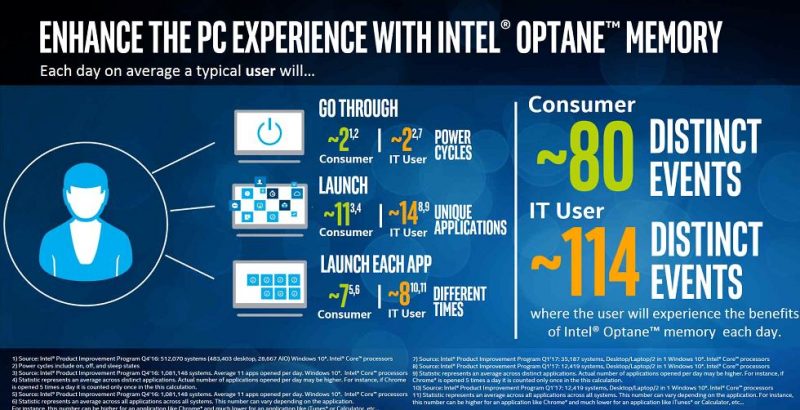
We are going to get to some of the specifics soon, however, Intel believes that you will save four minutes per day with Intel Optane Memory.
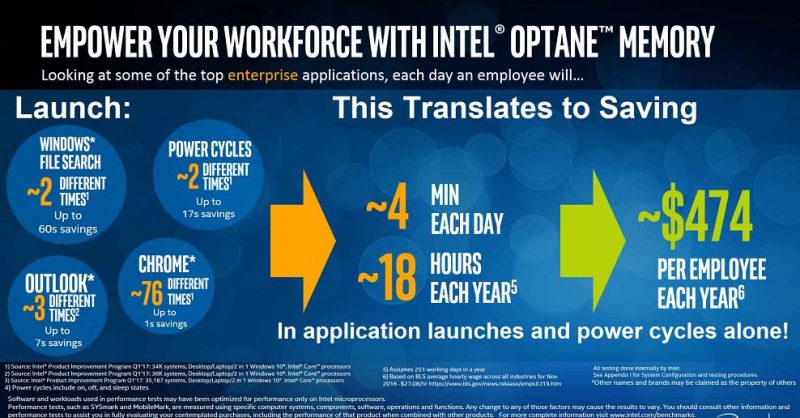
Intel is using around a $26/ hour per hour employee rate for these figures which may impact your company’s ROI calculations.
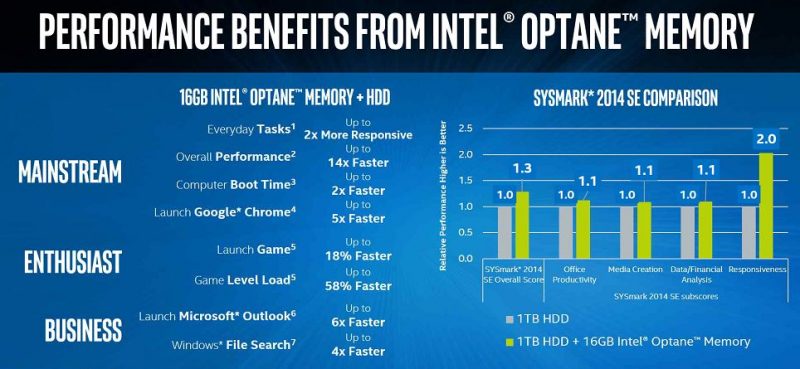
Intel even broke down a few performance figures by application. The one trick here is that Intel used Optane plus HDD not Optane plus SSD (SATA or NVMe) for these figures. We would expect many similar results for switching from HDD to NVMe SSD.
Key Intel Optane Memory Specs
Here are the key specs you probably are looking for:
- Endurance: 100GB/ day or ~3 DWPD (32GB) / 6 DWPD (16GB)
- Sequential Read: 1200MB/s
- Sequential Write: 280MB/s
- Form Factor: M.2 2280 PCIe 3.0 x2
- Power Consumption: Up to 3.5W active
These are not overly amazing specifications for these drives. At some point, one has to wonder whether users would be better served with 1TB NVMe SSDs versus the Optane SSDs.
Pricing and Availability
We expect these drives to be available on April 24, 2017 at $44 for the 16GB drive or $77 for the 32GB drive. That is a modest premium over other small SSDs such as the 32GB Innodisk SATADOM we reviewed today.
Final Words
Although these drives will likely be floating around the STH lab in the near future, we are significantly more excited about the prospects of the data center versions. Intel is bundling its caching software with the drives which may be useful for those using large capacity hard drives with these as SSDs.

